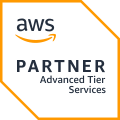Part 1 – An Intro to the Well-Architected Framework Review
Table of Contents
ToggleWhat is the the Well-Architected Framework Review? If you’re using public cloud services today, or you’re considering a migration to the cloud, it’s likely you run across many horror stories from others that blazed the trail to the cloud before you. How do growing companies leverage AWS best practices and avoid being part of the news today that is filled with stories of data breaches as more and more companies become targets for hackers.
What can you do as an organization to learn from others’ mistakes in the cloud? Introducing the AWS Well-Architected Framework Review (WAFR).
We’ll touch on a few points today to help dip your toes into the framework.
- Why was the framework created?
- How can the AWS Well-Architected Framework Review help?
- Where to from here?
Why was the AWS Well-Architected Framework Review created?
Whether you’re diving into the cloud for the first time, migrating your traditional on-premises IT workloads to AWS, or your organization was born in the cloud, you’re faced with an increasingly complex landscape of AWS services and design decisions.
How does one piece together the hundreds of AWS services and features, tailored to your IT workload and business requirements? How do you create working solutions that can scale, are within budget, and have factored in all your business policies and governance requirements? Are your workload designs secure?
Your application and cloud infrastructure design choices today are seemingly endless. Like most design decisions in the cloud today, the answer to these choices is often, “it depends”.

Well, depends on what?
What are the pros and cons of these design decisions? Maybe your design is focused on keeping costs low. What are you trading off in the form of security, resiliency, operational efficiency as a result?
How do you even know what the pros and cons are if you’re new to cloud computing and AWS?
Consequently, You don’t even realize what you don’t know at this point.
How do you know you’ve made optimal design choices for your infrastructure? Without years of trial and error and constant redesign of your apps and cloud? There’s no way of truly knowing.
All this trial and error takes a toll.
A toll on your customers, forced to live through the pain of unreliable services.
A toll on your business, watching earnings sink as customers leave and your cloud infrastructure costs soar.
A toll on your Engineering team, as they battle a flurry of issues day after day while trying to keep your production systems running.
All this pain is unavoidable when starting out in AWS. It’s simply the cost of doing business in the cloud. It’s the price you have to pay to gain the necessary experience to answer those “it depends” choices and develop your organization’s hard-learned lessons and best practices to avoid repeating these costly mistakes in the future.
But is all this really unavoidable?
What if there was some magic way you could harness the collective wisdom of millions of AWS cloud users’ brains across the globe?
How can the AWS Well-Architected Framework Review help me?
The ability to tap into all the lessons learned from the thousands upon thousands of existing AWS customers. Lessons learned in the form of AWS architectural design patterns, tested and proven by thousands of AWS customers. Lessons learned that get verified and refined by expert AWS Solutions Architects, AWS Professional Services teams, AWS Technical Support teams, and other internal groups at AWS.
All this collective knowledge magically funnelled into proven design best practices on AWS that guide you through the endless design considerations and help you avoid those costly years of trial and error would be priceless to any organization using AWS cloud.
Why repeat the mistakes others have already made? Why reinvent the wheel?

What sort of value would access to all these best practices provide to your organization?
With these design principles in hand, consider:
- The time saved in the architectural design process of your IT workloads
- Countless meetings avoided
- A number of failed proofs-of-concept avoided
- Thousands of hours of operational overhead are avoided through optimized self-healing applications and infrastructure designs.
- Disaster recovery, security and governance oversights are brought front and center to your engineering team going through these guided best practices.
- What about being able to run your optimized AWS cloud infrastructure at a fraction of the cost that would be typical of a trial-and-error approach?
The list of benefits here could go on and on.
This collective wisdom of AWS best practices and design principles would be of immense value to any organization operating in AWS.
So here’s the thing…
All that pain and toil from years spent through the trial-and-error approach of building in the AWS cloud, is avoidable.
You don’t have to suffer the same mistakes many other early AWS cloud customers faced. You don’t have to reinvent the wheel when building in AWS!
This goldmine of collective wisdom is made available by AWS through what they call the AWS Well-Architected Framework Review.
The AWS Well-Architected Framework provides a well-defined process to aid you with reviewing and measuring your new and existing AWS workloads against all these AWS cloud best practices. Again, these guiding principles contained within the framework are built from the collective experience of AWS experts working with thousands of customers and partners, testing and proving what works and what doesn’t.
Ok cool, where to from here?
In this multi-part article, we’ll be exploring this AWS Well-Architected Framework together, and highlight how you and your team can benefit from all this collective wisdom.
In the next part, we’ll explore the general design principles of the AWS Well-Architected Framework and the six areas of focus, which AWS calls pillars.
In future parts, we’ll deep-dive into each pillar area of this framework, going beyond just the basics of the AWS documentation.
By the end of this multi-part series, you’ll have an expert-level understanding of the AWS Well-Architected Framework, its core pillars and design principles, and how to start reviewing your own AWS designs against these proven best practices.
Don’t forget to sign up for our notifications so you won’t miss out on the next parts of this series and many more Cloud and DevOps articles to help you with your cloud journey.
If you need to get started with your AWS Well-Architected Review today, the Autimo team is here to help!
How can Autimo help?
We work with customers to go much deeper than the AWS Well-Architected Framework Review, by tightly integrating with your teams and learning about your business, your challenges, and goals. We don’t take these generic reviews at face value. We understand your business and team dynamics and can help tailor specific action plans that matter the most to you. Check out our Autimo Navigate service to learn more about how you and your team can leverage the AWS Well-Architected Framework Review.
Autimo can work with your teams to take the results of the AWS Well-Architected review, prioritize them and simply engage as a trusted advisor with your team as they work through the design improvement tasks. If more help is needed, Autimo can directly augment your existing team by providing AWS experts and project management capabilities to help shorten project deliverables.
Learn more about the AWS Well-Architected Framework here


